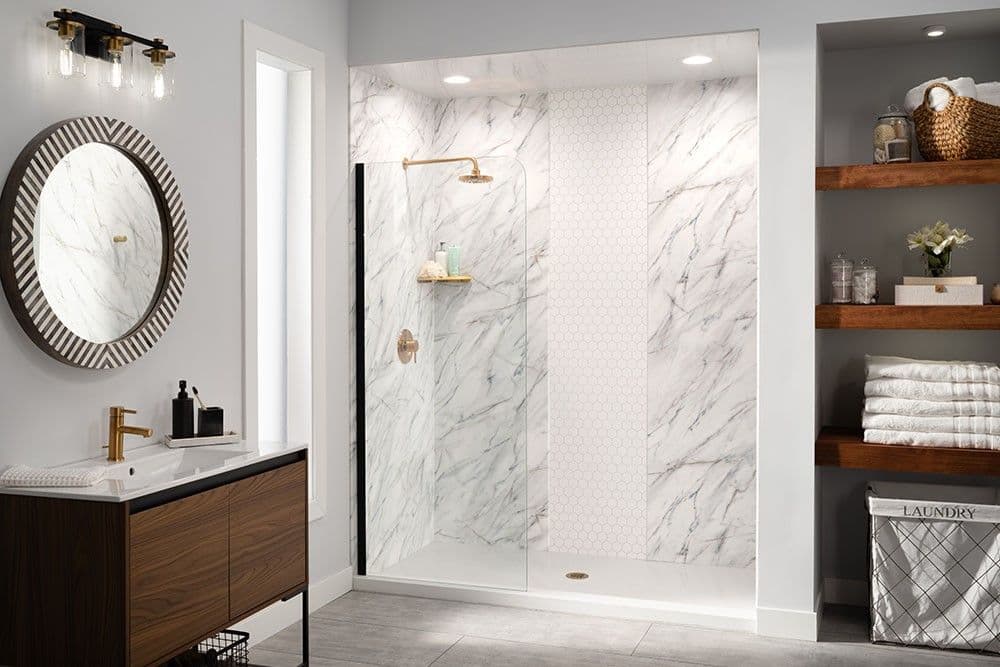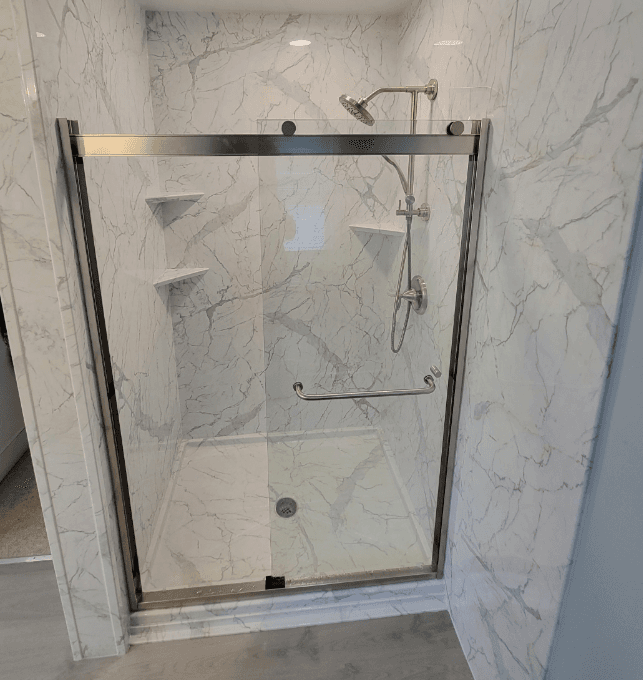
What Is the Best Material for a Bathtub?
Do You Know What the Best Material is for a Bathtub?
If you’re planning a bathtub replacement project, one of the most important decisions you’ll make is choosing the right bathtub material. With so many options available—from affordable fiberglass to luxurious solid surface materials—it’s essential to understand the pros and cons of each.
This guide explores popular bathtub materials. We’ll help you assess each material’s performance, maintenance needs, and aesthetic appeal so you can confidently select the one that best suits your home.
Why Your Bathtub Material Choice Matters
Your choice affects much more than just the appearance of your bathroom. The material you select will impact:
Heat Retention – Different materials have varying abilities to keep your bathwater warm. Some materials like acrylic and solid surface act as natural insulators that maintain water temperature for those long, relaxing soaks. Others, like basic fiberglass, tend to cool more quickly, which might mean adding hot water halfway through your bath.
Durability – Your bathtub faces daily exposure to water, cleaning products, and physical stress. Premium materials resist scratches, stains, and cracks for decades, while budget options might show wear within a few years. Think about how your household uses the tub—families with children might need something that stands up to toys and activity, while a rarely-used guest bath might do fine with a less durable option.
Maintenance – Some materials wipe clean with minimal effort and resist mildew and soap scum, while others require regular deep cleaning or special products. If you’re someone who dreads bathroom cleaning day, a low-maintenance material could save you hours of scrubbing over the years.
Installation – The weight of your chosen material affects everything from who can install it to whether your floor needs reinforcement. Lightweight options like fiberglass or acrylic might be DIY-friendly and perfect for upper floors, while heavier materials could require professional installation and additional structural support.
Cost – Bathtub materials range dramatically in price, from affordable fiberglass (starting around $200-300) to luxury solid surface options ($1,500+). Remember to factor in both the initial purchase and long-term value—sometimes spending more upfront means saving on replacements and repairs down the road.
Selecting the right bathtub and material ensures your bathtub fits your lifestyle, meets your comfort needs, and stands up to years of use without becoming a maintenance headache.
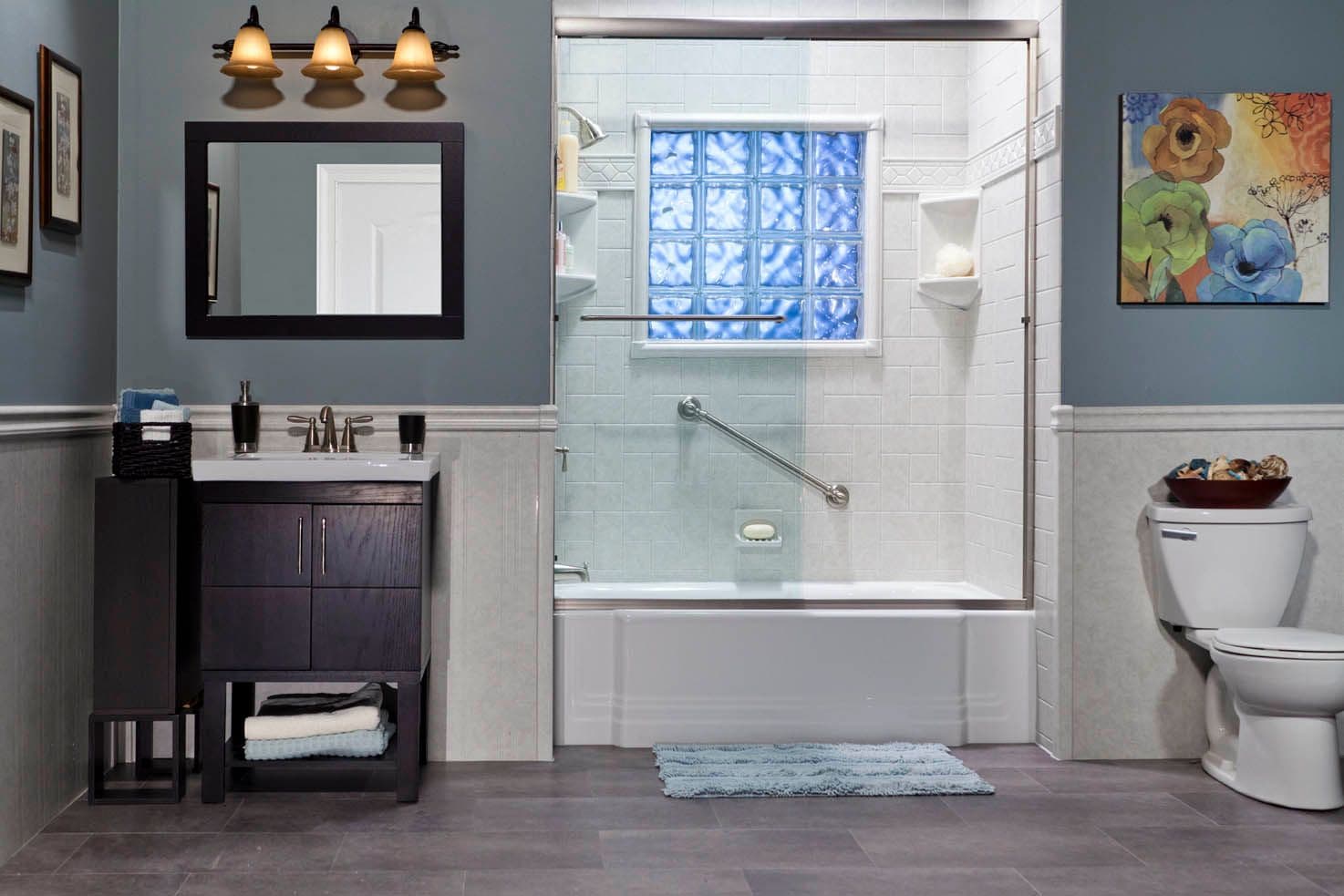
Bathtub Materials Worth Considering
Acrylic Tubs
What they are: Acrylic tubs are made from vacuum-formed sheets of acrylic plastic (a clear, glass-like thermoplastic) that are then reinforced with layers of fiberglass and resin for structural strength. This manufacturing process allows for incredible versatility in shapes and designs, from standard rectangles to deep soaking tubs with ergonomic contours. The material itself is about 1/4″ to 3/8″ thick, with a glossy, non-porous surface that comes in a wide spectrum of colors. Unlike some other materials, acrylic is consistent throughout, meaning minor scratches can often be buffed out.
Why you might love them:
- Lightweight and perfect for upstairs bathrooms
- Keeps your bathwater warm for longer soaks
- Available in practically any shape or color
- Smooth surface that’s easy to wipe clean
What to watch for:
- Can scratch if you use harsh scrubbers
- Needs proper support underneath to prevent flexing
Fiberglass (FRP) Tubs
What they are: Fiberglass-reinforced plastic (FRP) tubs are made by spraying layers of polyester resin and fiberglass into a mold, forming a lightweight shell about 1/8″ to 1/4″ thick. A gel coat finish adds color and smoothness. Less labor-intensive to produce, FRP is a budget-friendly option often used in entry-level tub-shower combos. Though similar in appearance to acrylic, it’s less dense, has a more textured feel, and may show fiber patterns along the edges.
Why you might love them:
- The most affordable option by far
- Super lightweight for easy DIY installation
- Small damages can often be repaired
What to watch for:
- Won’t last as long as other materials like acrylic
- Can stain more easily
- Surface might lose its shine over the years
Solid Surface Tubs
What they are: Solid surface bathtubs are made from a blend of acrylic or polyester resins and crushed minerals like marble dust or limestone. This dense, ½”-thick material is solid throughout—no outer coating—making it durable and long-lasting. Moldable into almost any shape, it features a matte or satin finish that mimics natural stone but feels warm to the touch. Brands like Corian, Swanstone, and Avonite offer solid surface tubs that can be seamlessly integrated into luxury bathroom designs.
Why you might love them:
- Can be shaped into virtually any design
- Highly resistant to stains and scratches
- Has a beautiful matte, stone-like finish
- Excellent at keeping water warm
What to watch for:
- One of the pricier options
- Heavier than fiberglass or acrylic
- Usually requires professional installation
Vikrell® Tubs (Kohler)
What they are: Vikrell® is Kohler’s proprietary composite made from fiberglass, resins, and fillers compressed under high pressure for added strength and durability. Unlike standard fiberglass, it has a denser, air-pocket-free structure and a uniform ¼” thickness with a pigmented, glossy gel coat finish. Commonly used in Kohler’s Sterling line, Vikrell® is ideal for molded one- and multi-piece tub/shower units, allowing for built-in features like shelves, grab bars, and textured floors.
Why you might love them:
- Tougher than standard fiberglass
- Resists mold growth
- Lightweight for easier installation
- Great for all-in-one shower/tub units
What to watch for:
- Fewer custom design options
- Can still scratch over time
Americast® Tubs (American Standard)
What they are: Americast® is American Standard’s lightweight alternative to cast iron, featuring a three-layer composite design. The outer layer is genuine porcelain enamel for a classic glossy finish, bonded to a middle layer of enameling-grade steel. The thickest layer, a proprietary composite “backing matrix,” provides structural strength while cutting the tub’s weight in half—about 75 pounds compared to 150+ for cast iron. Despite being lighter, Americast® maintains the traditional look, feel, and heat retention of porcelain tubs. A ribbed underside design adds reinforcement with less material.
Why you might love them:
- Much lighter than traditional porcelain tubs
- More durable than plain fiberglass
- Good at keeping water warm
- Has that classic smooth, glossy finish
What to watch for:
- Only available from American Standard
- Enamel can chip if you drop something heavy
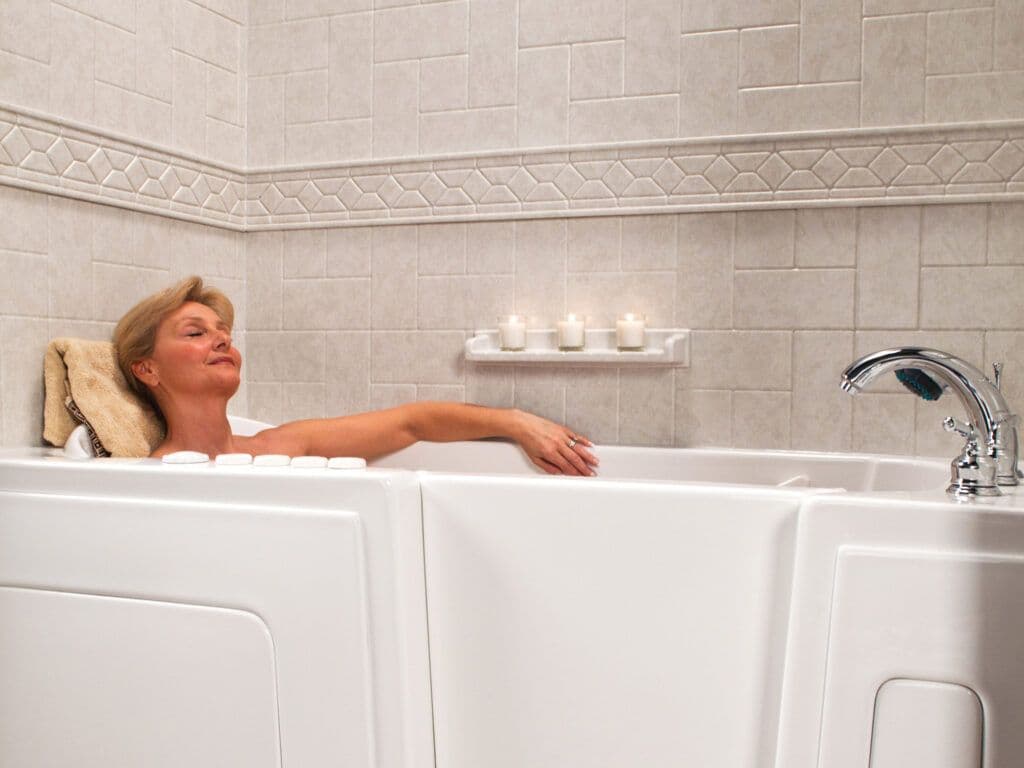
How to Make Your Decision
1. Think about your budget
Your budget will largely determine your options. If you’re working with a tight budget, fiberglass is going to be your most economical choice, typically costing a fraction of premium materials. For mid-range budgets, acrylic or Vikrell offer a good balance between affordability and quality, with better durability than basic fiberglass. If you’re willing to invest more upfront for long-term performance, solid surface or Americast will last significantly longer and maintain their appearance for years, potentially saving money over time by avoiding the need for replacement.
2. Consider your bathroom
Your bathroom’s location and size play a crucial role in your material choice. For upstairs bathrooms, stick with lighter materials like fiberglass, acrylic, or Vikrell to avoid the need for additional floor reinforcement, which can add considerable cost to your project. If you’re working with limited space, look carefully at the size and shape options available in each material. Some materials offer more flexibility in design than others. Acrylic and solid surface, for instance, can be molded into space-saving shapes that might work better in compact bathrooms.
3. Be honest about cleaning habits
Your willingness to clean and maintain your bathtub should influence your material choice. If you hate scrubbing and want minimal maintenance, solid surface, Vikrell, and Americast require less effort to keep clean due to their non-porous surfaces that resist staining and mildew. Their durability also means less worry about damage from cleaning products. If you don’t mind regular cleaning and are willing to be gentle with your tub’s surface, fiberglass and acrylic can work well with proper care. Just be prepared to use non-abrasive cleaners and perhaps apply a protective coating periodically to maintain the finish.
4. Think about your bathing routine
Your typical bathing habits should guide your material selection. If you love taking long, relaxing soaks, choose materials with good heat retention properties like acrylic or solid surface, which will keep your water warmer for longer periods without needing to add hot water. The feel of the material against your skin might also matter more. If you’re primarily a quick shower person who rarely uses the tub for bathing, heat retention matters less, and you might prioritize other factors like cleaning ease or aesthetic considerations.
5. Consider your style
Your design preferences should align with your material choice. For modern, contemporary bathrooms, solid surface or acrylic offer sleek, clean lines and can be molded into minimalist designs with integrated features. If you prefer a traditional look, Americast gives that classic glossy porcelain appearance that recalls vintage bathrooms but without the extreme weight. For simple and functional bathrooms where appearance takes a back seat to practicality, fiberglass and Vikrell work great, offering straightforward designs that focus on utility rather than making a design statement.
Remember, the perfect tub balances comfort, practicality, and your personal style. For a major bath remodel, it’s worth talking to a pro who can assess your specific space and needs.
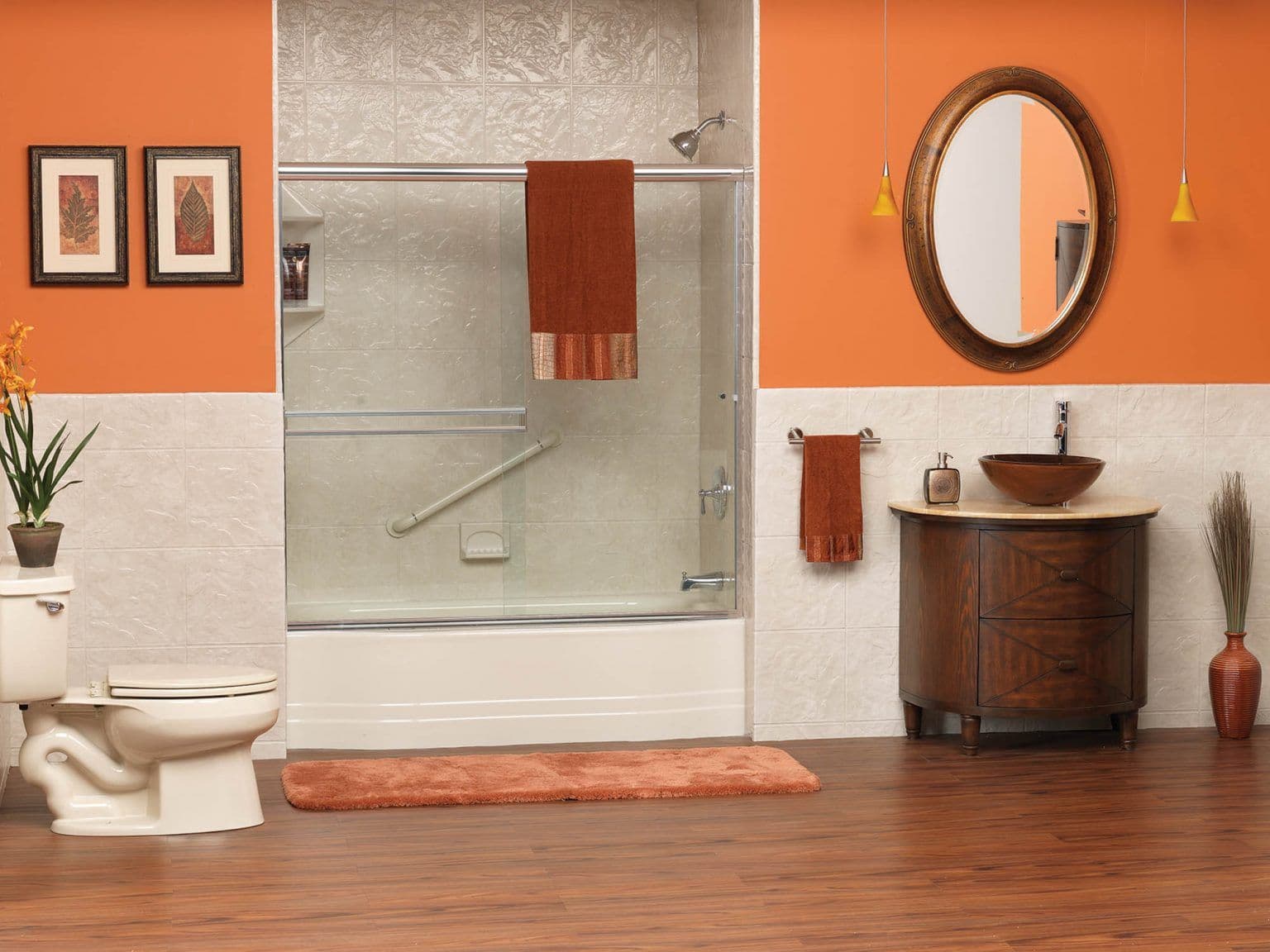
Need Help Choosing the Right Bathtub Material?
Choosing the right bathtub material is about balancing comfort, cost, and longevity. Whether you prioritize affordability, low maintenance, heat retention, or style, there’s a bathtub option that fits your home perfectly—without resorting to heavy metals like cast iron or steel.
Take the time to compare your options and don’t hesitate to get professional advice. Your bathtub should be a lasting investment in relaxation, functionality, and design. To get started with the professionals at Coastal Bath Company, call us at (302) 295-2133 or fill out a contact form today!
HOLIDAY EXTRAVAGANZA:
FREE Safety Package + No Payments Until 2027!
Includes bench, grab bars, and showerhead with docking station.
Recent Posts
A bathroom remodel is one of the best ways to enhance your home’s value, functionality, and comfort...
Your bathroom is one of the most frequently used rooms in your home, and it plays...
At Coastal Bath Company, we believe your bathroom should be a personal retreat—a space where serenity meets style...
Get A Free Quote and Check Out Our Monthly Promo
HOLIDAY EXTRAVAGANZA:
FREE Safety Package + No Payments Until 2027!
Includes bench, grab bars, and showerhead with docking station.

5-Star Craftsmanship
We recently had a small corner shower replaced. The area that could be used for a new shower was not large enough for showers that are available in any of the big box or retail stores. They came out and measured the area and installed a perfect fitting shower stall that is fantastic in looks and functionality.
Frank and his team are outstanding professionals, highly experienced and deeply knowledgeable. I recommend them highly!
Had new shower put in during May 2025. I needed two things tweaked which Coastal did asap. I waited for a couple of months to do review to be sure everything goes well after the initial installation. My new shower is EXACTLY what I wanted.
Coastal bath installed three showers in my new home build. The installers were on time and finished the three installs ahead of schedule. The installers were professional and were experts installing the showers. I love the wave wall panel and the classic concrete side panels. The showers are beautiful.


Contact Us
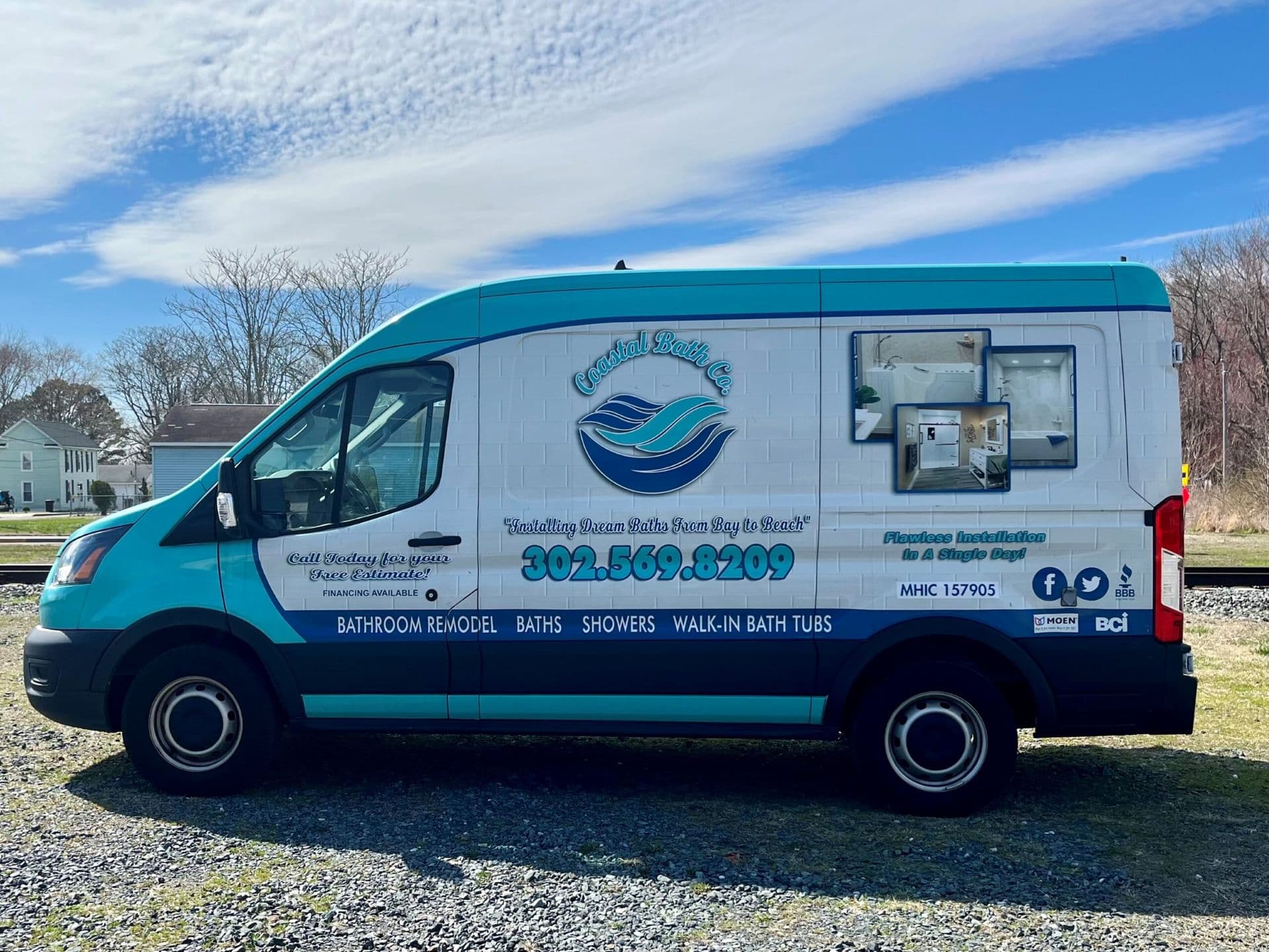
M-Th: 8AM-6PM
Fri: 8AM-5PM

